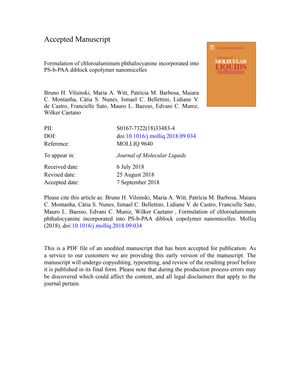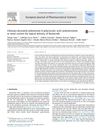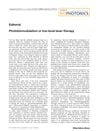Formulation of Chloroaluminum Phthalocyanine Incorporated into PS-b-PAA Diblock Copolymer Nanomicelles
September 2018
in “
Journal of Molecular Liquids
”

TLDR The PS-b-PAA copolymer nanomicelles are effective for delivering a cancer treatment drug in photodynamic therapy.
The document from December 2018 presents a study on the development of PS-b-PAA diblock copolymer nanomicelles as a delivery system for the hydrophobic photosensitizer chloroaluminum phthalocyanine (ClAlPc), used in photodynamic therapy (PDT) for cancer treatment. The nanomicelles demonstrated a micellar morphology with an average size of 200 nm, a low polydispersity index of 0.121, and an encapsulation efficiency of ClAlPc greater than 95%. The ClAlPc maintained monomeric form at low concentrations within the micelles but could self-aggregate over time. The system showed promising photophysical properties for PDT, with an oxygen singlet generation of 0.3. Skin permeation studies indicated that the nanomicelles could reach the superficial dermis layer, and in vitro tests with Caco-2 cell lines showed significant cellular damage after light radiation, with an IC50 of 1.74 ∙10^-7 molL^-1, while no cytotoxicity was observed without light. The study concluded that the PS-b-PAA copolymer nanomicelles are promising for delivering ClAlPc in PDT applications.

